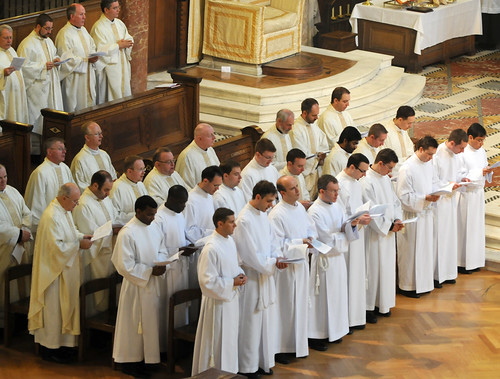4th December 2013
Catholic numbers and identities

We all know the phrase about lies, damned lies and statistics. I often think this is particularly applicable when trying to identify and quantify people’s religious identity. How do we count the number of Anglicans, Catholics or Muslims? For Christians, is it based on baptism, whether they go to church every week, or what they write in the national census? Do we assume that once a Muslim, from birth, always a Muslim? How do we differentiate between a devout and a secularised Jew? I have come across people who call themselves atheist Catholics or agnostic Jews. Into which box do they fit?
Perhaps we should not be so hung up about numbers. But identity does matter, even when we have to recognise that we can all hold multiple identities (for the record, I am British, English, white, Caucasian, Anglican, European, Christian, born in Birmingham but of a Kentish family, a father, husband, diplomat and, for my sins, a Crystal Palace supporter). An article in the Jesuit review, Civiltà Cattolica tells us some things about Catholicism that dovetail with recent messages of Pope Francis.
First, that the past is Europe, but the future is elsewhere. 23.5% of Catholics lived in Europe in 2011, but the proportion was 35.2% in 1978. Equivalent figures for Africa are 16% in 2011, up from 7.2% in 1978. In terms of future Church leadership, the figures are even more stark. There are 120,000 seminarians in the world in 2011, as against 64,000 in 1978; in fact a rise in the numbers of seminarians in proportion to the number of Catholics in the world. Yet the figure for seminarians masks a 15% drop in European and North American trainee priests over that 33 year period, as against a 387% rise in African and 206% in Asian. Dutch Bishops recently told Pope Francis that while the quantity of Catholics in the Netherlands is decreasing, the quality has remained steady. Frankly, I’m not sure what that means. I suspect that that is what the Cathars used to say to each other before they were hustled into oblivion in the Middle Ages.
Electing a non-European Pope, as the Conclave did in March this year, was a belated but wise response to the story that the numbers tell. The Pope’s emphasis on mission shows how aware he is of the need (for any faith, or organisation) never to become complacent, and always to seek ways to renew its core message. We shall see the Catholic Church, and the Holy See, increasingly representative of the world beyond Europe in the years ahead. This has significant implications for Catholicism worldwide as different cultures, identities and histories are integrated into the faith. And it needs to be understood by governments and other organisations, especially those based in Europe, that engage with the Holy See.
A very well written and balanced piece as always from Mr. Baker.